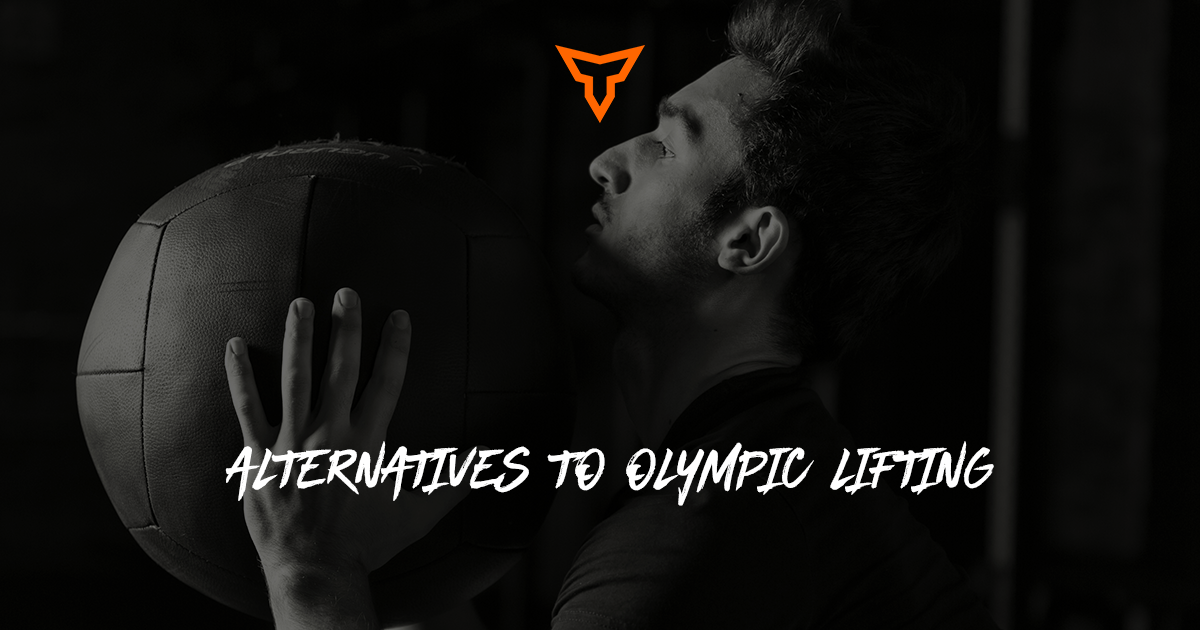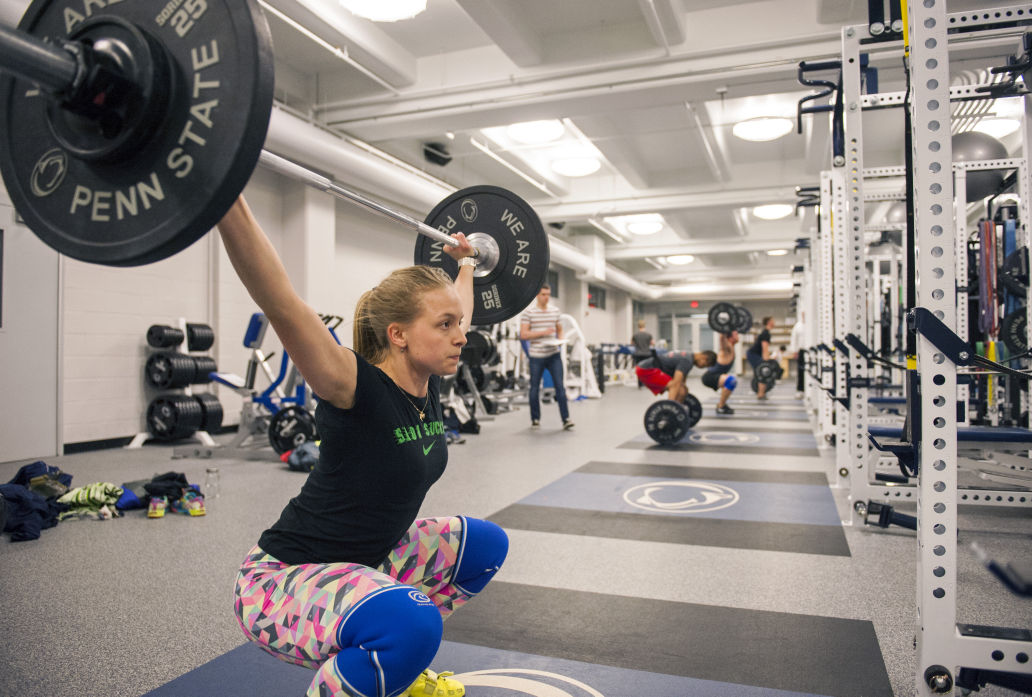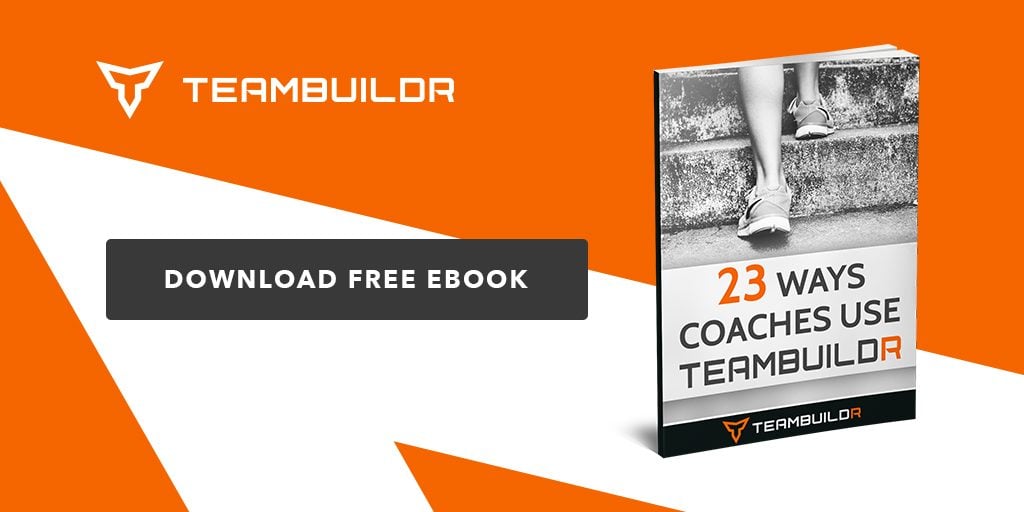Youth athletics has become increasingly popular in the US over the past two decades which means kids are also beginning to compete year-round in one sport through various clubs and non-school teams.
Due to the rise in popularity of youth athletic competition many parents are turning toward athletic performance coaches to help their children get an "edge." With the help of the functional fitness boom, more athletes are being introduced to the barbell at younger ages. This has led to an increase in youth- and high school-aged athletes using the “Olympic lifts” (snatch, clean, jerk) in training for competitive sport.
The Olympic lifts are a great tool to increase the physical capabilities in athletes of all ages. Using ground-based, multi-joint, ballistic movements has been shown to aid in power production of athletes that participate in the sport of weightlifting as well as athletes competing in other sports. However, as of late there has been a move to focusing more attention in the development of youth athletes in the US and this has led to the discussion over which training methodologies are appropriate for which populations.
While the movements practiced in the sport of weightlifting are great training tools they must be introduced at an appropriate time in the development of the population you are working with. If an athlete cannot execute a front squat using a clean grip front rack position it might not be as beneficial for that athlete to rush into pulling cleans from the floor. The process for determining the readiness level of the athletes in question is up to the coach whom which they are working, but the process must not be rushed. As a current strength and conditioning coach I understand the pressure from sport coaches to see their kids maxes increasing or to want to post a cool video of your athlete on social media hitting a new max, but for the sake of your athletes take your ego out of the equation.
The process for introducing the Olympic lifts into the program of a high school or youth athlete must come after a developmental period where basic movement proficiency is acquired. Generally speaking, you cannot put the cart before the horse. If you haven’t introduced front squatting and deadlifting you might want to hold off on competition style cleans. When I introduce the Olympic lifting techniques into an athlete's program the first movement I start with is the snatch. This may seem odd to some people and even frighten some others, but my reasoning behind it is simple. The snatch requires a higher degree of technical proficiency, a more patient pulling tempo, and has greater requirements for mobility and stability than the clean or the jerk. Essentially, if an athlete can learn to snatch proficiently it will be much easier to learn the other two movements.
<< Get tips and tricks from the top S&C coaches in the country >>
Subscribe to the TeamBuildr Blog
The Snatch
Step 1 in the snatch progression I follow begins with understanding the overhead position. I utilize a "top-down approach" meaning I begin with teaching the catch positions and then work to the pulling part of the lift. Day one of learning to snatch begins with a PVC pipe. We establish grip width and then immediately move to behind-the-neck snatch grip push presses (SGPP). This exercise is not only a great tool for teaching the athlete to find “the slot” where the bar will end up in the catch, but it also serves as an assessment of the athlete's overhead mobility. If the athlete cannot put the PVC into the proper position due to a mobility issue the learning process is altered to include extra corrective exercises to aid in increasing overhead mobility for the snatch.
Once the athlete has become comfortable with the snatch grip push press exercise we will progress to a PVC overhead squat (OHS). Again, this step is used as a mobility and stability assessment. If the athlete cannot execute an overhead squat, you as the coach must take the appropriate steps to get the athletes working in the right direction if you wish to continue introducing the Olympic lifts. Following the introduction of the overhead squat, I will utilize a simple complex to begin linking everything together for the athlete. The complex is a SGPP+OHS. You can utilize any number of reps for each exercise. I like to begin with a 3+3. The athlete executes three SGPP and then moves straight into three OHS following the last SGPP.
Following the introduction of the SGPP+OHS complex the next exercise is introduced: the snatch balance or drop snatch (SB or DS). This exercise aids in teaching the athlete to attack the bottom position and stabilize the bar rapidly overhead. This is usually where I introduce the barbell as well. At this point, the athletes are not only bored with the PVC pipe but have gotten a feel for where the bar must sit to catch it properly. I like to do a heaving DS to get the athlete accustomed to going from full extension of the body into a catch position, similar to when they begin pulling. This can once again be used in a complex. My favorite is 3 SGPP+ 3 DS+ 3 OHS. Executing this complex for 4 rounds with just an empty bar will be taxing and begin to build your athletes specific capacity for snatching.
After a firm introduction with positioning for the catch, I begin to introduce pulling mechanics. As mentioned above, I follow a top-down approach so I begin teaching the pull from the hip or position 1 as it is also known. I like to introduce position 1 pulls after we have reached the complex stage of learning the catch position. This helps to keep the athletes engaged in the learning process a little more as it takes away the monotony of training the same patterns over and over again. From this position, I can also have another hinge type pattern to training my athletes with. I suggest training from the block rather than the hang (if you have the available equipment) out of personal preference. I think it is easier to cheat from the hang and not finish your pulls, even from position 1. Beginning from a static start with the bar already at the hip will help to teach the athlete how to fully extend and push through the floor to propel the bar rather than pull with their arms and not get fully extended.
Many Olympic lifting coaches will progress to a high pull at this point prior to executing a snatch, but I believe that this teaches an over-dependence on the upper body for pulling and, especially with youth athletes, is too advanced of a movement to introduce right now. We will discuss bar path, but the next step is to get to snatching. Well kind of. I like to use the muscle snatch to teach bar path and get the athletes feeling what full extension feels like in a more controlled manner than what they would experience attempting a normal snatch. After they feel comfortable with muscle snatching we progress to position 1 snatches from the blocks. Weight will be limited in position 1 due to the short pull and also you as the coach must not let the athletes work with too great of loads too soon. Athletes that handle heavy loads before they are ready put themselves at greater risk of injury and a movement like the snatch is not one to try and overload too soon.
Progressing further down the leg and eventually to the floor comes when the athlete is ready for those steps. This is where the art of coaching comes in. Slow cook the athletes and really get them acquainted with the movements before loading them too soon.
The Clean
The clean is the next movement in the progression of learning the Olympic lifts. Once again the top-down approach is used. The front squat comes as a prerequisite movement so the front rack position has already been introduced and hopefully mastered (I use the term "mastered" loosely here). We begin once again at position 1 from the blocks, with position 1 muscle cleans. This allows the athlete to really feel out the bar path and transition from the pull to the catch. The progression is the same from here as it was for the snatch. The progression of the athlete is dependent on their level of readiness. If they can progress to pulling from the knee with technical proficiency in the movement go for it. If not work position 1 a little longer. If you can get your athletes bought into trusting your coaching and the process then it will be easy to tell Jimmy to get after from position 1 while Riley is introduced to pull from below the knee.
The Jerk
I introduce the jerk last because I feel that after the athlete has learned to snatch and clean it will be an easy transition to understanding the mechanics of the jerk. Step 1 of teaching the jerk begins with the overhead press (OHP) from the front rack and rear rack. Again many coaches will think I’m crazy for even thinking of going from behind the head, but if an athlete is capable of executing the movements safely and has the required mobility and stability who am I to limit their learning. Pressing is the prerequisite because I need an athlete to be strong overhead, not just mobile. Pressing will also help with bar path. Step 2 brings push presses from the rack and behind the neck. The idea of push pressing allows the athlete to begin learning to use their lower body to aid in propelling the bar overhead and not relying solely on their upper body. From there I progress to a push jerk and will spend most of the time here. I think that split jerks should be saved for a more advanced training age of the athlete. Unless the athlete wants to compete in weightlifting my progression for the jerk will stop at the push jerk, or “power jerk” as some call it, with youth athletes. In terms of power production, a push jerk is less technically demanding and therefore an athlete will have an easier time truly expressing power rather than being hindered by lackluster technique. I also believe the split jerk is a naturally asymmetrical movement. In athletes, we try to avoid training asymmetries as much as possible and while splitting with both legs can accomplish this, I believe that a non-dominant leg split may limit true expression of the athlete's power. Push Jerks for the win!!!
Keep in mind that while you are introducing these highly technical movements the athlete still must be taking part in a sound training program that includes various unilateral and bilateral squatting, hinging, upper body pushing, and upper body pulling movements. Just because an athlete has started learning to clean doesn’t mean that she shouldn’t deadlift or squat anymore. Push jerking an empty barbell is not a substitute for vertical or horizontal pressing. If you are interested in coaching weightlifting learning these movements will take precedent over bench pressing, but if you are coaching high school football players in the weight room or youth sprinters in a track club there still needs to be a sound training plan being executed while these movements are being learned.
Lastly, don’t rush your kids into these movements. The highly technical nature of them requires a lot of time and fine-tuning to ensure that they will benefit the training of your athletes and not just feed your ego by getting likes on Instagram or Facebook. Also if you have athletes who simply are not ready for these movements then stick to the basics. Plenty of athletes have gotten really powerful from taking the extra time to learn proper sprint and jump mechanics and to throw medicine balls. The Olympic style movements are not the "end all, be all" of training. They are simply another great set of tools for the coach looking to better serve their athletes.
Plenty of athletes have gotten really powerful from taking the extra time to learn proper sprint and jump mechanics and to throw medicine balls. The Olympic style movements are not the "end all, be all" of training. They are simply another great set of tools for the coach looking to better serve their athletes.
Subscribe to our blog
Subscribe to receive the latest blog posts to your inbox every week.
Related posts

Alternatives to Olympic Lifts

3 Alternatives to Olympic Lifts from Mike Boyle

